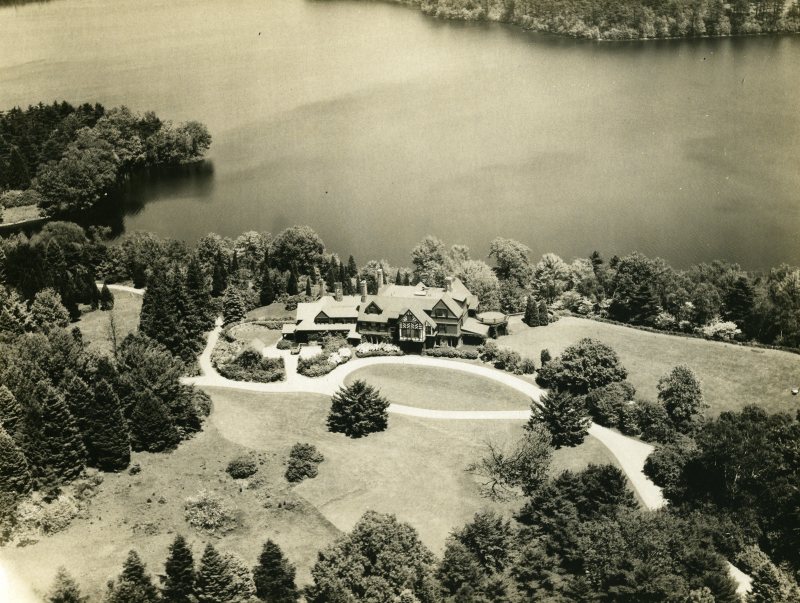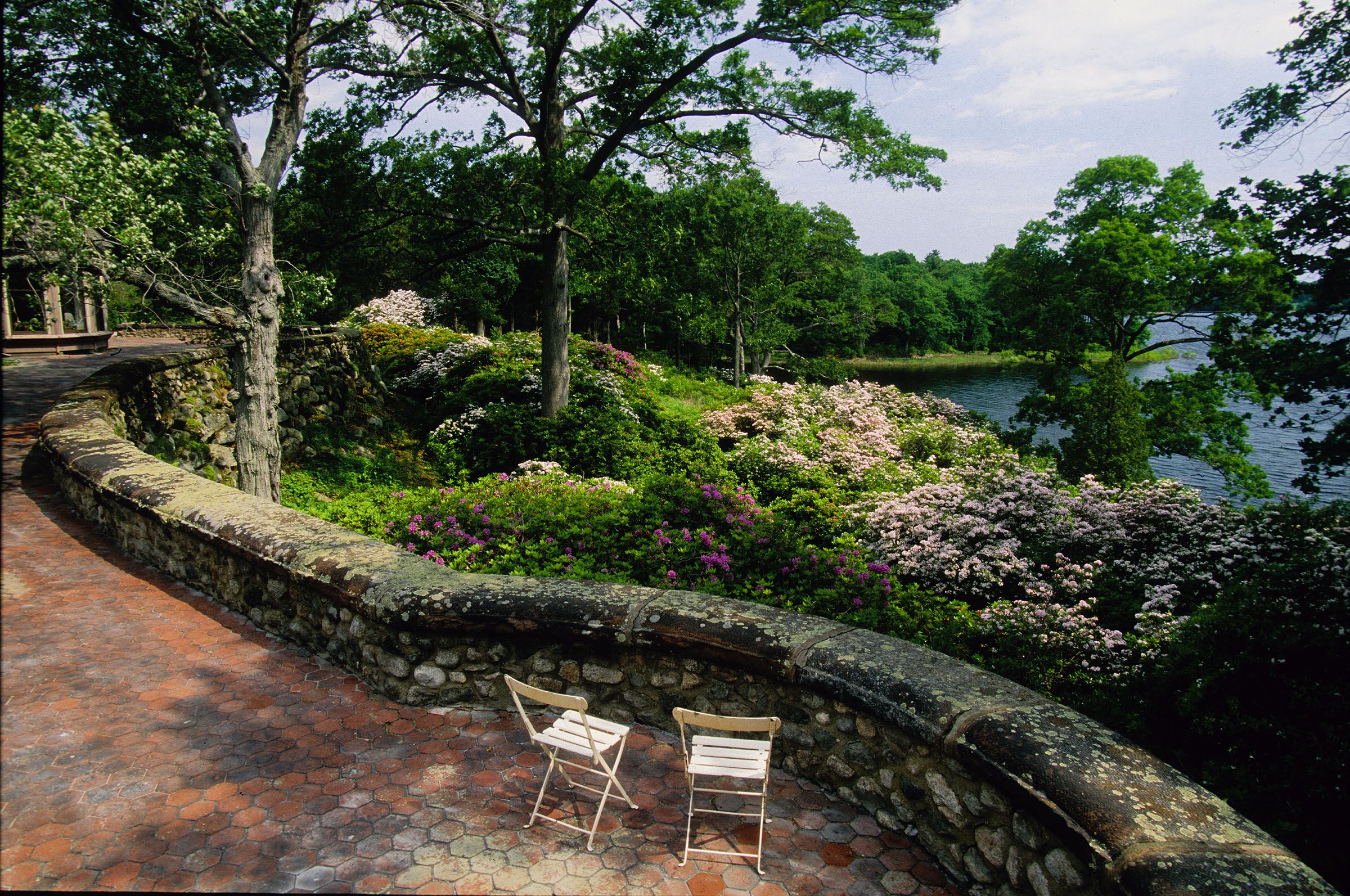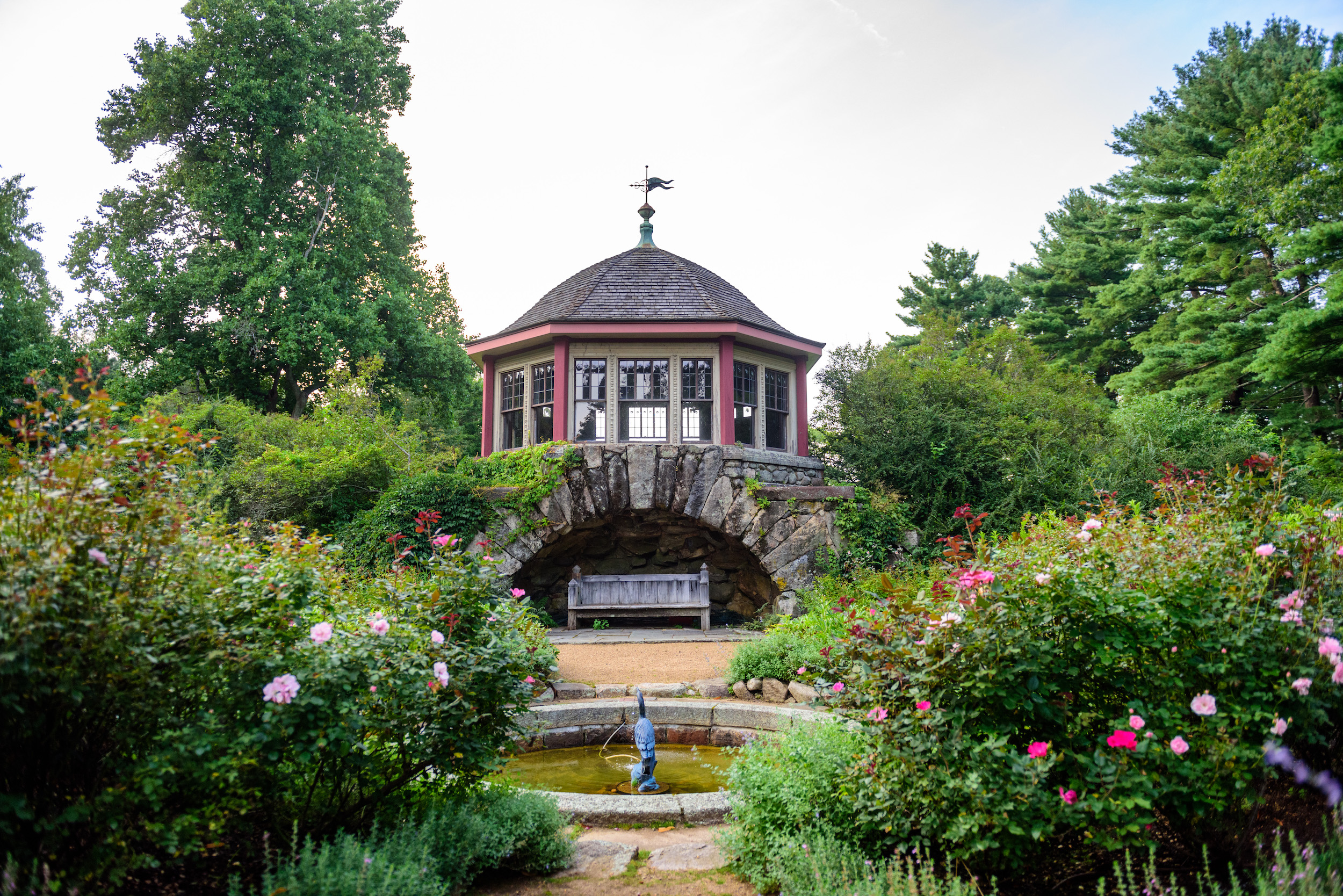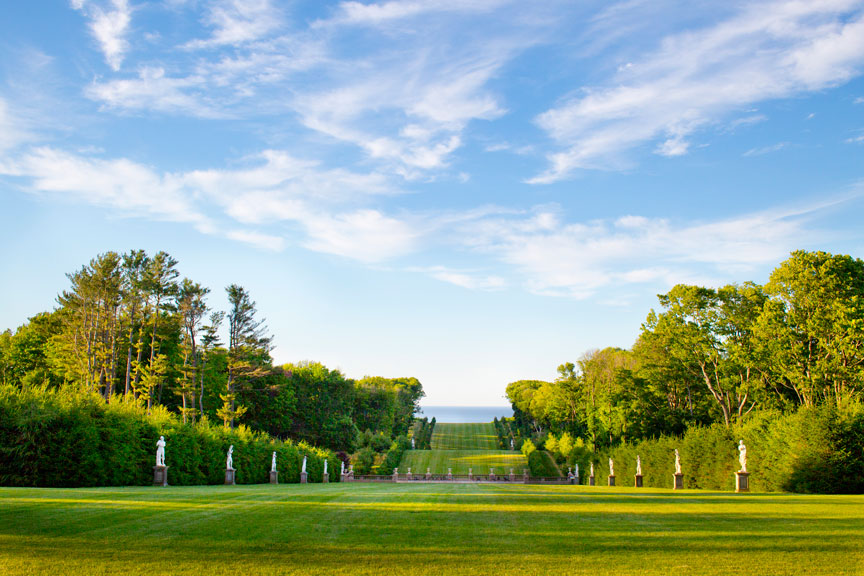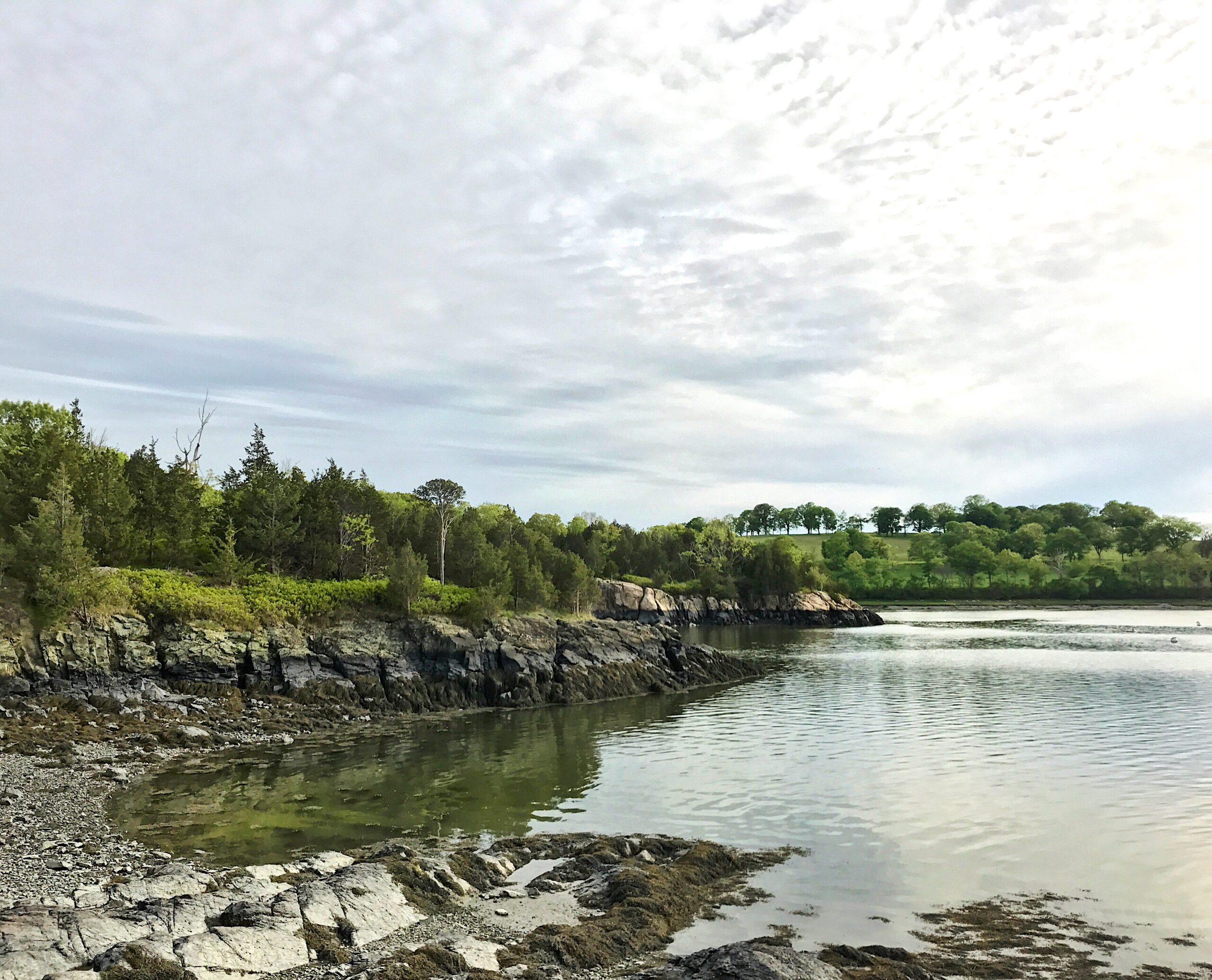We were delighted to welcome so many of our Founders Circle members to the Frederick Law Olmsted-designed Moraine Farm in Beverly last week to celebrate the bicentennial of Olmsted’s birth and his legacy as the father of American landscape architecture. Read on to learn about the deep connection between Olmsted and The Trustees, his design work at our properties, and his mentorship of our founder, Charles Eliot.
Designed in the 1880s as a country estate for Boston businessman John C. Phillips, Moraine Farm is, “the finest existing example of Frederick Law Olmsted’s approach to planning a country estate,” according to preeminent Olmsted scholar Charles E. Beveridge.
Over the past 150 years, the estate has been comprised of parcels of land owned by different families, a private school, Project Adventure, and The Trustees. Remarkably, Olmsted’s design has remained largely unchanged over that time, making it a gem among the estates he created.
Thanks to Founders Circle members and other donors like you, we raised $4.15 million dollars to purchase a key 66-acre parcel at Moraine Farm—the area most closely designed by Olmsted. Today, we reunite that land with the other Trustees-owned parcels, resurrecting this masterpiece by the father of American landscape architecture.
Last week, we invited Founders Circle members and community members to Moraine Farm to celebrate the bicentennial of Olmsted’s birth, just one event in a yearlong national celebration of Olmsted’s legacy. While Moraine Farm remains one of his most enduring residential designs, it is far from Olmsted’s only connection to The Trustees. His design firm’s fingerprints are on many of our 123 properties, and he served as a mentor, colleague, and friend to Trustees founder Charles Eliot.
In 1883, one year after his graduation from Harvard, Eliot became Olmsted’s first official apprentice, working on designs for parks in Boston, including Franklin Park, Arnold Arboretum, and the Fens. In 1886, Eliot opened his own landscape design firm in the city, and just a few years later in 1891, founded The Trustees of Reservations. First an apprentice, and eventually an equal in the world of landscape architecture, Eliot rejoined Olmsted and his sons at their firm in 1893, under the new name of Olmsted, Olmsted, and Eliot, where he worked until his death at the young age of 37 in 1897.
I think that The Trustees and Moraine Farm belong together.”
– Mimi Batchelder-Brown
Olmsted’s philosophies and beliefs, and their influence on Eliot, played a significant role in the founding of The Trustees. Beyond that, his design work, and the work of his sons, can be found at several Trustees properties, namely the iconic World’s End and Crane Estate.
World’s End
In 1889, John Brewer commissioned Olmsted to lay out a housing subdivision on Planter’s Hill in Hingham, two years after Olmsted created a similar subdivision plan in Swampscott on Boston’s North Shore. While the housing development at World’s End was never built, Olmsted’s design was partially realized in the tree-lined carriage roads that, today, serve as walking paths and the memorable core of the property.
Castle Hill on the Crane Estate
In 1909, six years after Olmsted passed away, Richard Teller Crane Jr. commissioned Olmsted’s sons to design his Italianate villa at Castle Hill in Ipswich. Here, the firm created a sunken formal garden, Italianate forecourt, and bowling green inspired by the Villa Gamberaia and Boboli Gardens in Italy.
For more information on Olmsted’s influence on Trustees properties and his relationship with Eliot, enjoy this article by Trustees Cultural Resources Program Director Cindy Brockway. You can also watch our Conservation in Action webinar from earlier this year with two Olmsted scholars, Lauren Meier, of the Olmsted Papers Project and founding coordinator of the National Park Service’s Historic Landscape Initiative, and Keith Morgan, architectural historian and professor emeritus of American and European Architecture at Boston University.
If you missed the event earlier this month, you can visit Moraine Farm at our Open House on Sunday, Oct. 30, and hear from the many organizations we partner with at the property, as well as the Friends of Olmsted at Moraine Farm, who will share information about the property’s amazing history. As we continue making final property improvements, we look forward to fully opening Moraine Farm to the public in late 2023.
Thanks to our supporters, especially members of our Founders Circle, we have been able to acquire this magnificent landscape and maintain it for the use and enjoyment of all, forever.
As said by Mimi Batchelder-Brown, who inherited a parcel of land her family owned at Moraine Farm and subsequently gifted to The Trustees in 2011:
“This was a premier Olmsted property, with its unique residential design and intent, praised by scholars for its significance and its conserved status, and The Trustees are the outstanding cultural and land-conservation organization. I think that The Trustees and Moraine Farm belong together.”

